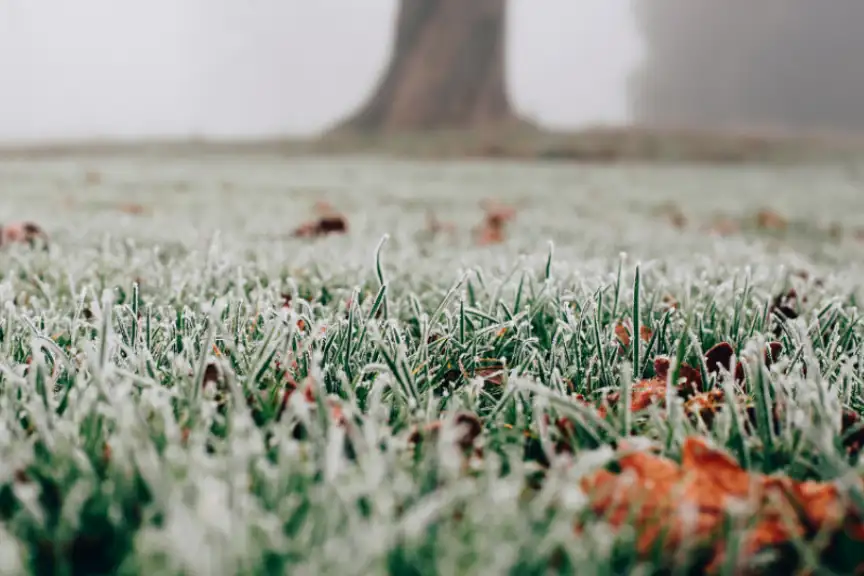Top Tips For Winter Lawn Care
Even though it's now winter, there are still lots of lawn activities to do to help your lawn survive the cold winter months.

Even though it's now winter, there are still lots of lawn activities to do to help your lawn survive the cold winter months.

Having a beautiful lawn in winter isn't impossible.
You've probably got a warm season lawn - most Aussies do - which means that in the warmer weather, your lawn thrives. The downside of this is that when the temperature drops, lawn growth slows and can go into dormancy. During winter, Aussie lawns tend to lose colour and struggle to repair. This is due to the sun's position in the sky, increased shade, and lower soil temperatures.
Autumn is the best time to prepare your lawn for winter; however, there are still steps you can take during winter to ensure that your lawn doesn't completely suffer from the 'winter blues'. Below we explore the activities you can be doing on your lawn in winter.
Mowing higher in winter will help prolong the colour in the leaf blades – the longer the leaf, the more photosynthesis occurring, and therefore, the greener it will stay.
With reduced mowing, now is a great time to get the mower serviced. A job that a lot of people neglect is keeping the blades on the mower sharp. Dull blades rip and pull at the grass – you'll notice little strings attached to the ends of grass blades, where its edges are frayed and damaged, that's how you know you're overdue for sharpening your blades! By keeping the mower blades sharp, it makes for a cleaner cut and causes less stress to the grass so that it can recover quickly. Read more here on keeping your blades sharp.

Keep off the grass! Frost on your lawn is your grass blades freezing; walking or driving over it results in these grass blades snapping under your feet or car. This can initially be seen as black marks and later brown, dead grass. If the frost is light, when temperatures start to warm up in the day, a light application of water can help to remove the frost quicker and help the plant deal with the shock/stress of the temperature. If the frost is heavy and it shows no signs of lifting, do not apply more water as this can make it worse.
Deciduous trees are great to have in the garden. They're attractive and provide year-round benefits, especially in winter, when they drop their leaves and allow more sun onto the lawn. But if these leaves are not picked up, the benefit is quickly lost. Leaving leaves on the lawn blocks sunlight to the grass underneath, and hinders oxygen, water, and nutrients from getting where they need to go. In turn, the lawn is more susceptible to fungal diseases and pests. Do the right thing by your lawn and rake or vacuum the leaves and add them to your compost bin.

Winter grass – no it's not a slang term for your lawn during winter – is a pesky, lime-green weed that forms tufted grass clumps throughout your lawn. It is an annual weed that develops in autumn, grows through winter and sets seed in spring, but sometimes earlier if weather permits. In warm season grasses it can be seen quite easily, often as the greenest patch in your lawn. It's ability to produce a large number of seeds has enabled it to spread throughout Australia and many parts of the world.
Small infestations can be pulled out by hand, but if you have let it seed in previous years this could take a whole weekend. For large infestations, use Munns Professional Winter Grass Killer. It's available in a convenient hose-on pack and is specially formulated to kill early winter grass seedlings. It's also a pre-emergent spray and helps protect against future winter grass seedlings for 2-6 months, generally lasting longer in cooler climates. Re-apply if any new seedlings emerge. Check out our videos on how to use our Munns Professional Winter Grass Killer on your lawn.
During winter, weeds take advantage of your lawn's weakened state, quickly filling every bare patch and possible gap. Bindii and other broadleaf weeds like clovers, dandelions, capeweed, cudweed and thistles are the main culprits.
Bindii is an annual winter weed, that pops up around April and grows till spring/summer when it sets seed for the following year. Those seeds have a very painful spike, which helps them attach to your thongs or feet (ouch!) and spread around your lawn. The best time to treat bindii is June-July.Hit them now and you can enjoy your summer lawn in bare feet!
To control bindii and other broadleaf weeds, we recommend using Munns Professional Buffalo Booster Weed and Feed or Munns Quick Fix Triple Lawn Treatment.
Over-watering will drastically increase the possibility of turf diseases. As the temperature continues to decrease, so should your watering. In fact, in most parts of Australia, winter rainfall should be enough.
The cold has put lawns into dormancy and stopped growth. However, if you live in a warmer region, we recommend to apply Munns Professional Green Dominator Lawn Fertiliser to help offset the discolouration as temperatures drop. Remember, if it's greener come spring, it will return to peak condition faster. If you are in an area of heavy frost, do not apply anything during this time.
Once the weather starts to warm up, apply a fertiliser to help give it a kick start. For cool season grasses, like Fescue and Bluegrass, we recommend using Munns Professional Golf Course Green Lawn Fertiliser. If you've got a warm season grass, like Couch, Kikuyu or Buffalo, we recommend using Munns Professional Buffalo Booster Lawn Fertiliser.